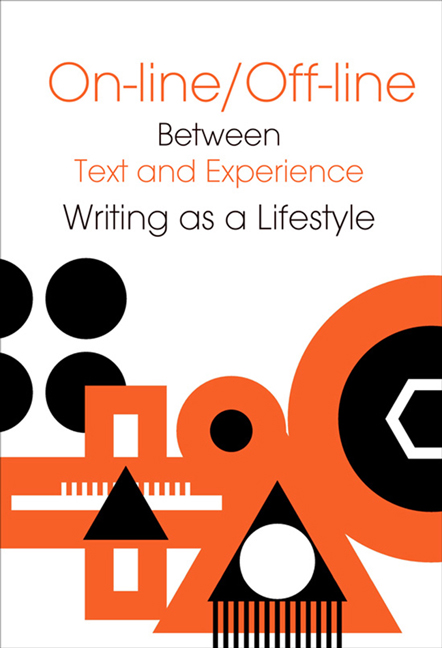Book contents
- Frontmatter
- Contents
- Editors’ Introduction
- ON-LINE/ OFF-LINE
- LITERATURE AND CONVERGENCE
- Poetics in the Age of Convergence
- Convergence and Communication: Genre Analysis of the websites of Polish Writers
- Towards a Generic Analysis of the Microblog (Based on a Study of Twitter)
- How Does the Hybrid Work of Art Exist?
- Liberature in Relation to the Reconfiguration of Aisthesis
- Literature in/of the City – Introductory Comments
- Literary Studies, History and Popular Culture – the Spaces of Convergence
- Afterpop: the Almost Perfect Convergence
- Transcultural Convergence? Polish Poets and Artists and the Oriental Verbo-visuality
- From an E-narrative Poem towards an Interactive Work of Art. Media Convergence Illustrated with DOWN by Zenon Fajfer and The Surprising Spiral by Ken Feingold
From an E-narrative Poem towards an Interactive Work of Art. Media Convergence Illustrated with DOWN by Zenon Fajfer and The Surprising Spiral by Ken Feingold
from LITERATURE AND CONVERGENCE
Published online by Cambridge University Press: 12 January 2018
- Frontmatter
- Contents
- Editors’ Introduction
- ON-LINE/ OFF-LINE
- LITERATURE AND CONVERGENCE
- Poetics in the Age of Convergence
- Convergence and Communication: Genre Analysis of the websites of Polish Writers
- Towards a Generic Analysis of the Microblog (Based on a Study of Twitter)
- How Does the Hybrid Work of Art Exist?
- Liberature in Relation to the Reconfiguration of Aisthesis
- Literature in/of the City – Introductory Comments
- Literary Studies, History and Popular Culture – the Spaces of Convergence
- Afterpop: the Almost Perfect Convergence
- Transcultural Convergence? Polish Poets and Artists and the Oriental Verbo-visuality
- From an E-narrative Poem towards an Interactive Work of Art. Media Convergence Illustrated with DOWN by Zenon Fajfer and The Surprising Spiral by Ken Feingold
Summary
Abstract
The text, using the example of a work belonging to the literary style (Spoglądając przez ozonową dziurę [Detect Ozone Hole Nearby] by Zenon Fajfer) and the interactive art (the in-stallation The Surprising Spiral by Ken Feingold) analyses the idiosyncracy of works posi-tioning themselves at the borderland of media and literature, works both literary (textual, narrative and poetic) as well as media ones (changeable, iconic, set in a computer program, double-indirect), paying attention to the meaningfulness of the disciplines borderland (in this case literary and media studies).The author stresses the reasonableness of the question asked by Katarzyna Bazarnik, whether, by accident, the “Darwinian” evolution of species continues. In the author's opinion, based on her observation of works belonging to the literary style and the discussed work The Surprising Spiral by Ken Feingold, this question should get a positive answer. And possibly, as an effect of initiation, which has already happened, we will soon be entering the museum-gallery space not only in order to look but also to read.
Key words: liberature, Zenon Fajfer, Ken Feingold, borderland of media and literature, new media
The sheet of paper is not transparent, not in the least. This is only an illusion. We can no longer pretend that it is not here. It is. It has always been. It was and it had a nice smell. If I wanted a transparent page, I would use a transparent sheet.
it in glass. The text will hover in the air, and the reader will be able to look at its members as if (possibly) God looks at us through the ozone hole. If I want a fully transparent page, I will print my text on a transparency and bind
What will I bind it in? In glass? Why not? Who said that a book must always look like «a book»? After all, this is only a convention that everybody follows automatically. […] The book may even look like a bottle. What's more, it may be a bottle. But Eyeing Like Ozone Whole (2004) is a book like any other.But a book that cannot look otherwise. Because its form is dictated by the text.[…]
The creative act (often) begins from reflection on the structure of the book, and the act of reading (always) begins from taking the book in hand. A differ-ent book structure is tantamount to a different physics.
- Type
- Chapter
- Information
- On-line/Off-lineBetween Text and Experience: Writing as a Lifestyle, pp. 371 - 400Publisher: Jagiellonian University PressPrint publication year: 2016

